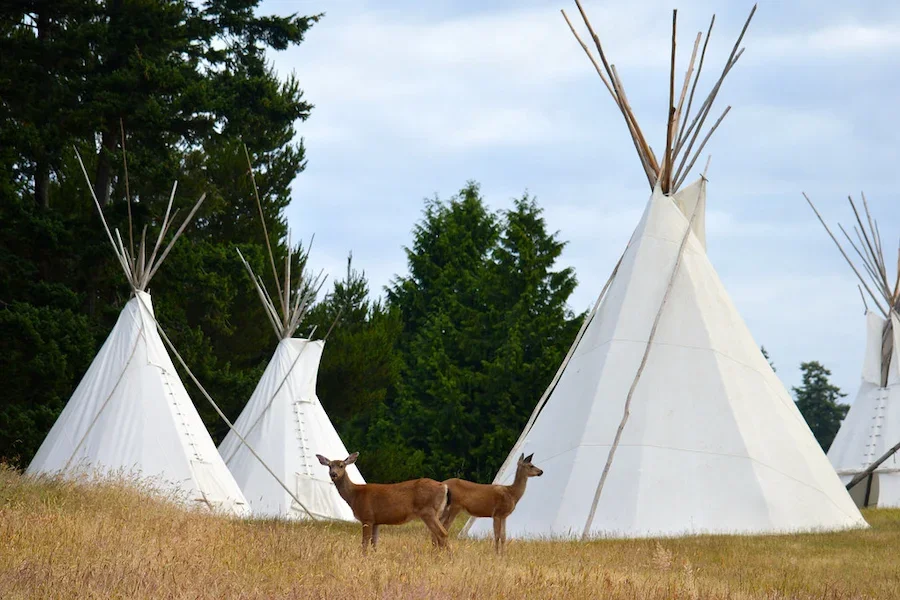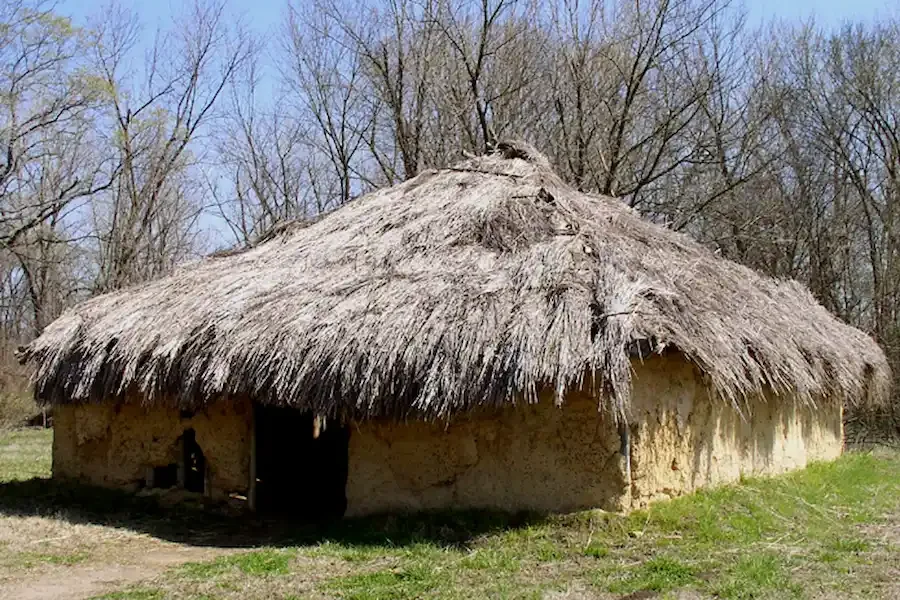Native American Indian people lived in many different sorts of dwellings. Many designs were portable, whereas some were fixed. Those unique home designs vividly expressed the dynamic nature and creativity of the Americans.
There are many Native American homes that exist as living testimony to their former life. This post takes a look at the most famous Native American homes.
Different Types of Native American Houses
Below are descriptions of eight native American house designs the ancient people developed to fit their needs.
Wigwam Home
Wigwam houses were Algonquian tribes due to American Indians’ creativity who lived in the Northeast.
Natives used bark from trees similar to a longhouse to build a wigwam, but they were smaller and more effortless to construct.
Wigwams stood with the help of tree poles that were easy to tie together and bend to create a dome-style home. Though the frames weren’t portable, people could sometimes move the coverings when moving the tribe.
Wigwams were pretty small, forming a circle about 15 feet in width. Although living in these houses was a tight squeeze, they would help people keep warm during winter.
Tipis

American Indians didn’t live in a place long ago; they were nomadic. Thus, they needed to create a house that could carry their belongings easily. That was why a tipi (also spelled tepee or teepee) was a critical part of their lifestyle.
The first step to building a tipi was to criss-cross numerous wooden poles to generate a cone-formed structure.
After ensuring the poles had safe support in the ground, residents would drape and secure stretched canvases (made from buffalo hide) around those poles.
They left a hole on the top of the canvas so that fire could build within it and smoke could escape. Meanwhile, people’s mats on the ground often used buffalo hide as the primary material.
Depending on the homeowner’s needs, a tipi might be small to house a few residents but could also be enormous enough to accommodate a dozen.
Longhouse
A permanent construction of native Americans is the longhouse – a type of house created by Iroquois people who lived in the Northeast.
They used bark from trees and wood to build longhouses, usually in a rectangular, long shape.
The native would collect tall poles and generate a solid rectangular frame to form a longhouse.
Next, they placed curved poles on top to form the roof, then covered the roof with grass and bark, which acted as shingles.
A sizable tribal village might include several longhouses, and each longhouse could hold 20 people.
Pueblo

Pueblo houses were different from all the styles mentioned so far. They were the only homes that used clay and bricks, designed explicitly by Hobi tribes living in the Southwest of America.
A pueblo could hold thousands of residents, which was amazing and unique.
People made clay bricks used to build pueblo homes by mixing sand, grass, straw, and clay to create a potent blend and built them into cliffs or caves.
A pueblo house could have four or five rooms piled up on each other, and there were ladders connecting each one.
Chickee
The unique thing about the chickee was that it had no walls and was a creation of Seminole Indians living in swampy conditions in Florida.
This home design got support from posts, covered with a raised floor and thatched roof. These parts made them excellent for protection against animals and swampy flooring.
In rainier and colder times during the year, Seminole families hun canvas curtains or walls to deal with cold weather and the rain.
Wattle-and-Daub and Grass Houses

Wattle-and-daub and grass houses were relatively similar. A grass house was a cone-shaped, tall dwelling made of woven or prairie grass covering a solid frame of wood sticks.
Likewise, a wattle-and-daub house used vines, bark, woven sticks, and other natural materials covered with some plaster (daub) like clay.
Grass and plant materials could be more robust than people think, particularly when pieced and braided together. Yet, they couldn’t stay warm during cold weather.
That was why wattle-and-daub and grass dwellings were more prevalent in Southern areas where the weather was warmer.
Igloo
Inuit residents living in Alaska were the original designers of Igloos. They were small domed shelters made of packed ice blocks cut by a knife.
These dwellings were not homes for year-round use, built to stay during cold winters, particularly in the North.
Two people could build an igloo in a few hours as its construction was straightforward. The interior stuff used snow as the primary material, including sleeping quarters, shelves, and storage.
Tribes built igloos in different sizes for different needs. Tiny homes served as temporary dwellings for 1-2 hunters during hunting seasons.
Medium-sized shelters served as semi-permanent dwellings with only one room, while giant igloos were popular in Inuit villages and designed for long.
Plank Houses
A plank house was a permanent wooden structure. Plank houses were a creative product of native Americans living in the Northwest, along the coast.
They crafted planks together to create homes that could put up with cooler temperatures and rain.
Since this type of housing was challenging to build, tribes constructed one only if they intended to stay in a fixed place and live there for a long time.
How Native Americans Decorated Their Houses
Native American decoration style remains unknown in most parts of America and the world.
Pacific Northwest regions are famous for their excellent art objects, mostly wood carvings. Those wooden art items come in simple natural browns or vibrant colors. visit the site
Such pieces would beautifully suit any room decor style in earthy hues, no matter the color.
Some native American Indian artists also created astounding Aboriginal masks that beautified the walls and rugs for the entire interior ground.
Also, they might decorate their houses with native American blankets. The blankets are the most notable items that have contributed to their prolonged art history and are still famous these days.
Final Thoughts
One of the main reasons modern-day people think native Americans are ingenious is that they could build homes in regions that many might consider uninhabitable.
Since different regions have different conditions and materials, numerous native American houses were born for specific purposes. And each has a distinct name and story behind it.
Geembi hopes this article has been informative to you. Thanks for reading!
| More: 22 Fantastic Native American Gifts For Everyone

